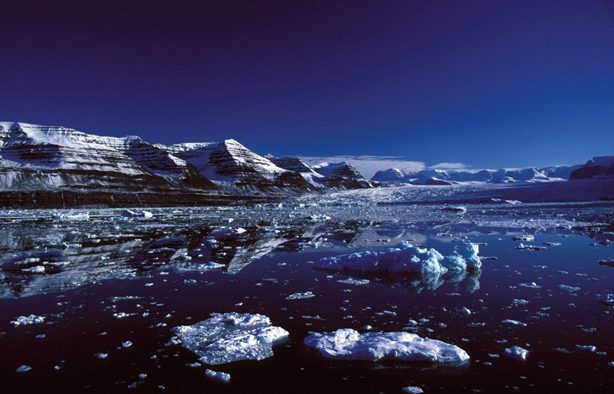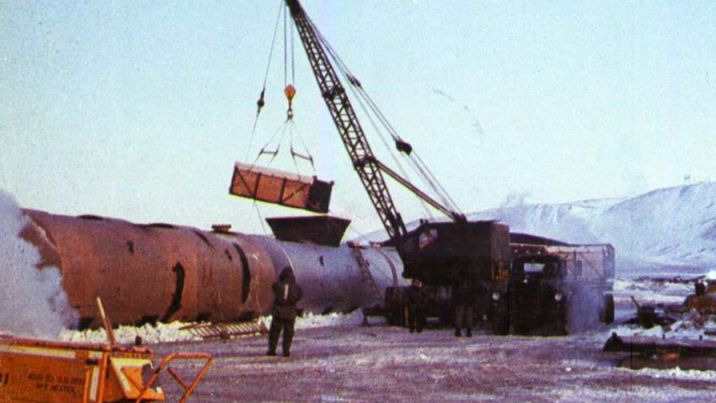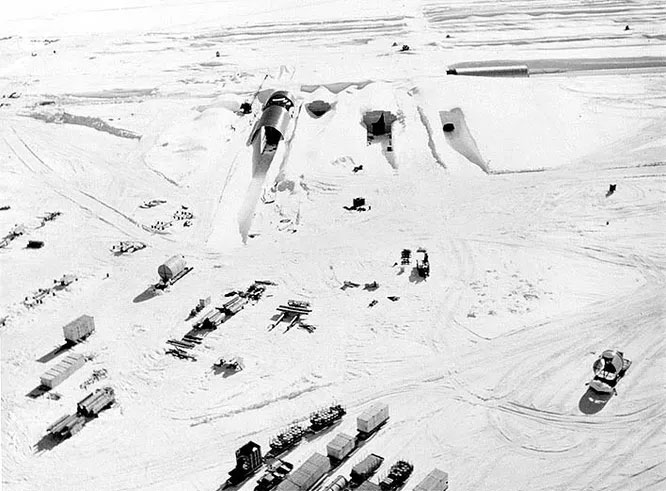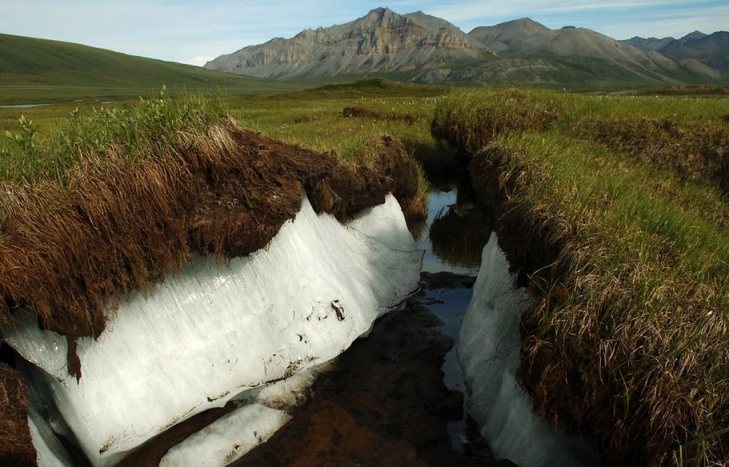A team of scientists has discovered that thawing permafrost could release a dangerous legacy of the Cold War – nuclear waste that is still radioactive. In addition, the release of pathogenic microorganisms is possible, reports Nature Climate Change. Melting Arctic glaciers could release radioactive waste from Cold War-era nuclear submarines and reactors. The Arctic’s nine million square miles of ice have been accumulating for more than a million years a variety of substances that could be released into the air and water due to climate change.
US nuclear waste
During the Cold War, the United States stored nuclear waste—or accidentally dispersed it—in several locations around the world. The Government Accountability Office (GAO) recently released updated information on three of these sites in Spain, Greenland and the Marshall Islands. Two of these landfills are currently under threat from climate change in the form of melting ice or rising sea levels, which could eventually reveal the deadly contents of these landfills.

During the Cold War, the United States and the Soviet Union had the brilliant idea of irradiating the planet by testing a nuclear bomb. Of the 67 US nuclear tests during this period, Castle Bravo, conducted in the Marshall Islands on March 1, 1954, was the largest. This caused environmental and humanitarian damage to the surrounding area. And now, in the era of climate change, the specter of the nuclear age’s most dangerous era once again haunts the world.
A new Government Accountability Office (GOA) report reassessed three sites around the world contaminated by U.S. nuclear waste. One such site was Palomares, Spain: in 1966, an American B-52G bomber carrying four thermonuclear bombs collided with a KC-135 tanker in the area. The collision did not explode any bombs, but it did disperse a lot of radioactive material. The report notes that the United States and Spain continue to monitor pollution to this day.
In addition, a plane crash over Thule Air Force Base in 1968 played a role in the contamination of Greenland’s ice. The B-52 strategic bomber was then on a combat patrol as part of Operation Chrome Dome and carried four B28FI thermonuclear bombs. Due to a fire on board, the plane began to fall, and thermonuclear ammunition collapsed, causing radiation contamination of the area.

50 years ago, a B-52 carrying thermonuclear bombs crashed over Greenland
Also, the secret American project “Project Iceworm” of 1958-1966 influenced the preservation of nuclear waste in ice. Then it was planned to build a system of tunnels 4000 kilometers long under the Greenland ice sheet and deploy about 600 intercontinental ballistic missiles in it aimed at the USSR. From 1960 to 1963, electricity was supplied through the first mobile nuclear reactor, Alco PM-2A.
“Scientists concluded that contaminants should remain in the ice until at least 2100,” the report says. “Radioactive isotopes will continue to decay while in the ice cover, and as a result, they will pose less of a threat to human health the longer they remain trapped in the ice.”
The US Department of Energy and RMI disagree about the impact of past US nuclear tests on the people of this republic. “What we need now is action and implementation of environmental restoration measures,” Ariana Tibon, chair of the National Nuclear Commission RMI, told environmental website Grist. “If they know it’s contaminated, why haven’t recommendations been made on next steps to remediate the environment?”
The nuclear legacy of the Soviet Union
The Soviet Union conducted about 130 nuclear tests in the Arctic zone, which released large amounts of persistent radioactive substances into the atmosphere. The US also contributed to the accumulation of nuclear waste by creating the Camp Century research center. It is located under the ice in Greenland and was powered by nuclear power. Another potential threat is natural metals. Arsenic, mercury and nickel have been mined in the Arctic for decades, contaminating tens of millions of hectares. If these compounds get into the water, they can poison game animals and fish.
From 1955 to 1990, the Soviet Union conducted more than 130 nuclear weapons tests in the atmosphere and surface layer of the ocean at the nuclear test site of the Novaya Zemlya archipelago. As a result, approximately 265 megatons of nuclear energy were released and more than 100 nuclear submarines were sunk in the nearby Kara and Barents seas. Even though the Russian government has launched a strategic cleanup plan, the scientists’ report notes that radioactive cesium and plutonium were still found in ice, vegetation and water in the area.

The first mobile nuclear reactor “Alco PM-2A”
The operation of this facility was discontinued in 1967, but the remains of its structures and waste, including radioactive waste, were decided to remain in place – it was assumed that they would be buried forever under a layer of snow. However, a 2016 study found that this part of the Greenland ice sheet could begin to melt by the end of the century, at which point remnants of infrastructure and biological, chemical and radioactive waste could leak into the environment and disrupt nearby ecosystems.
In addition to byproducts released during fossil fuel extraction, the Arctic contains deposits of various substances, including arsenic, mercury and nickel. According to the report, the extraction of these minerals has caused massive pollution over tens of millions of hectares for decades. These pollutants are stored in permafrost, but as it thaws, they can end up in the atmosphere and water, causing enormous damage to animals, birds and people.
Over the past 70 years, more than 1,000 settlements have been created on the territory of permafrost – for the extraction of various resources, scientific and military projects. There is also a local population in this area, that is, there are not so few people there. Scientists note that this increases the likelihood of accidental contact with deposits of various substances and their release.
Dangerous microorganisms
Along with nuclear waste, hundreds of microorganisms are frozen in the ice. As permafrost melts, they can mix with meltwater and create new, antibiotic-resistant strains of viruses. Scientists have already identified more than a hundred “ice” bacteria that have proven invulnerable to existing drugs. “Viruses from thousands of years ago could wreak havoc on society if they escape their icy prison,” the study says.
Permafrost, more than three meters deep, is one of the few areas on Earth where modern antibiotics have never been used. Researchers have discovered that more than 100 diverse microorganisms preserved in Siberian permafrost are resistant to antibiotics. And as warming progresses, they can mix with meltwater and create new antibiotic-resistant strains of existing bacteria.
There are already relevant examples. So, in 2016, a 70-year-old carcass of a deer that died from anthrax melted in Siberia. The pathogens were still active, and the child died after coming into contact with them. “We need to learn more about the fate of these harmful microbes, contaminants and nuclear materials to properly understand the threats they may pose,” the scientists said.





